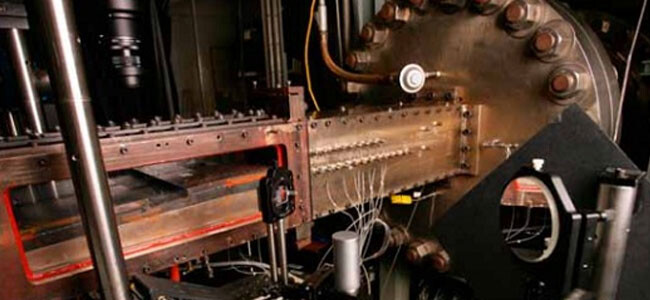RECENT ADVANCES
A new data reduction technique for MTV has been developed, which for typical experimental conditions reduces displacement uncertainty by a factor of 5 compared to the commonly used Direct Cross Correlation method. Another advantage to this Template Matching Method is the relative insensitivity to highly deformed grids, thus permitting longer delay times and increasing the relative accuracy and dynamic range of the measurement.
For more information, visit our Research Section.
HTV
Hydroxyl Tagging Velocimetry is a molecular tagging technique used to measure flow velocity by time of flight—by using common water (from air humidity) as the source of tracer molecules. Grids of tracer are commonly generated, shown to the right, which are imaged and reduced to determine 2D velocity and vorticity fields.
HTV has been successfully applied to combusting and non-combusting flows, including: rocket exhaust, supersonic wind-tunnels, turbine engine exhaust, and shock-tubes.


